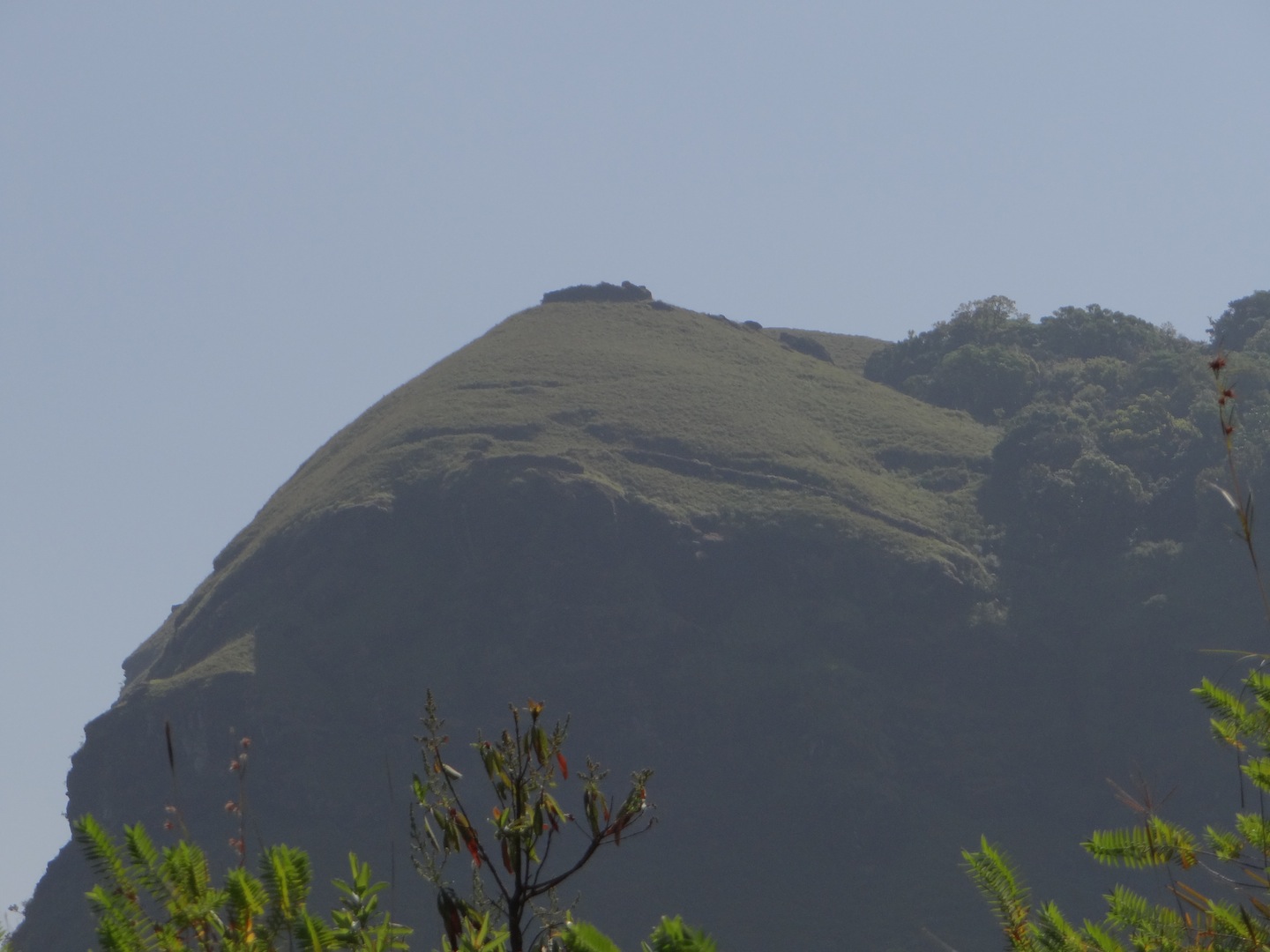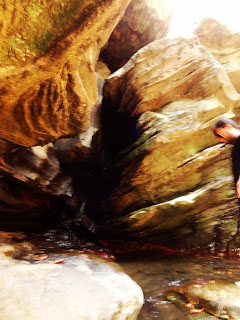It’s the time to
share my experience of yet another alluring destination in Karnataka - the secluded Ballalrayana Durga! Ballalrayana Durga confines in its ruins, the
memories and legends of the great men, who ruled Karnataka once upon a time. To
this day, Ballalrayana Durga seems to be shrouded in an aura of the bygone era.
All I know about the history of this fort is that it was built by Ballal
raya(there are Ballal I, II and III. No idea which one built it!) and that it
was later captured by Tipu Sultan. We started from Mangalore at 5.15 a.m. on a
weekend to explore this seemingly alluring fort.
Ballalrayana Durga as seen from the
starting point of the trek
The fort walls being seen along the hill.
There are two routes to reach Ballalrayana
Durga – via Ujire and via Sunkasale.
En route the fort via Ujire you come across the Bhandjje falls. This is however
a tough uphill ascend of more than 10km. and may not be possible in a single
day.
We took the Sunkasale route, which is much shorter and easier as we had only a
single day at our disposal. A three-hour drive through the scenic Charmadi
Ghats took us to Sunkasale. At the
starting point of the trek lies an old Kalabhairava
temple. It is said that this temple has also been built at the same time as
the fort.
As is a routine now with every trek, there
has to be a surprise awaiting the Gypsies! This time the surprise came in the
form of a tractor ride from the temple along a very kutcha but motorable road.
It all started when a tractor attached with
a carrier came and halted in front of us as we were preparing to begin the
trek; courtesy some labourers who were transporting soil in the carrier.
Needless to say, a photo shoot followed where the tractor was the celebrity! The
labourers offered to drop us till the point they went along the trek route to pick
soil. We were too happy to oblige. Soon all the Gypsies were in the carrier of
the truck, enjoying a bumpy ride along a bumpy road. It was like volunteering
to sit on a machine made to administer birthday bumps! Every moment we were
being tossed up a few centimeters in the air and were then landing with a thud
back in the carrier. The constant vibrations were displacing our sun protection
gear. Hats were falling off and sunglasses rattled on the nose. In the melee of
vibrations, a water bottle escaped to freedom from the confines of a bag’s side
pocket. A labourer found it lying on the road and handed it over to us. Truly,
a worthy beginning to our trek!
A memorable tractor ride!
The next couple of hours were spent
ascending through forests for some time and then following a curvy path in the
vast sunny grasslands. The fort walls, which looked like a thin line drawn
across the peak, beckoned us silently all along the way. The fort walls extend
over a couple of kilometers in the endless stretch of grass -that is all that
remains of the fort. Along the wall, a few circular watch points are built at
strategic locations, which offer an unhindered view of the town below along
with the many approach roads to the fort. Undoubtedly, this must have been a
strategic location in the olden days! From the fort, you can also see all four
peaks in the Charmadi ranges. After an hour of exploring the fort we started
back to our base. We visited the ancient temple, which had signified the start
of our trek and started on our way back to Mangalore stopping only for a photo
shoot in a sprawling tea estates a few kilometres away and then, to visit the
Alekkan falls situated along highway passing through the Charmadi Ghat.
Trekking through the sunny grasslands.
The tea estate a few kilometers
from the Kalabhairava temple
A watch point at the fort.
Visiting the Alekkan falls was yet another
adventure. We had to go down the highway into the valley along a very steep and
slippery descend for about 200 meters. From where we were standing, the way to
the falls looked too difficult. We stood there contemplating how to go down;
and if we manage to go down, how can we climb up again! It was the proverbial
“So close yet so far” situation! But we were not the ones to give up… slidding
and falling, slowly and cautiously we decended to reach the Alekkan falls. The
Alekkan falls flow through the Charmadis from one side of the highway to
another. A manhole has been constructed under the road to allow the water to
flow without any obstacles. On the other side, when we went down the valley, we
could never guess that the waterfall flows beneath a cement and concrete road. Even
so long after the monsoons, the water flow was quite strong. Alekkan, though,
bears the burnt of being situated so close to the higway – it is littered by
the usual culprits – loads of plastic…
Climbing up to reach the highway was much
easier than we had anticipated! Soon we were back on our way home after a day
well spent exploring nature and the relics from history.
The Kalabhairava temple.
The steep decent to the Alekkan falls.
Alekkan Falls
Gypsies at the Alekkan falls
Date : 19th January, 2013
With: Fahad A.R, Achalesh J, Mahesh, Fairoz, Giri Tanari, Sahana Varadraj, Vidya, Nachiket, Charan Walke, Shubham, Sarath Gopeenathan, Venugopal, Suchit, Aditi,


























